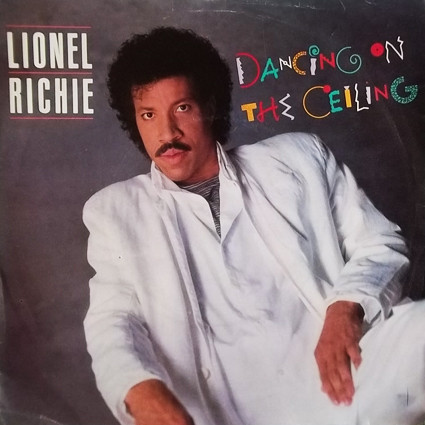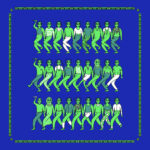 Lionel Richie looking suave in a white suit and slicked-back hair, posing against a plain background.
Lionel Richie looking suave in a white suit and slicked-back hair, posing against a plain background.
Let’s be upfront – Lionel Richie isn’t exactly my cup of tea. His penchant for white suits, that slightly unsettling resemblance to a black John Oates, and a catalog brimming with saccharine ballads… it’s a lot. My personal history with Lionel even veers into the traumatic. Let’s just say a dream involving him and a romantic encounter led to some serious therapy sessions and a support group for shared Lionel-induced anxieties. Yes, it’s a real thing. We meet every week. We have tissues. We question the universe.
And yet, amidst this sea of Richie-disdain, a confession bubbles to the surface: I unironically enjoy one Lionel Richie song. Just one. Not a medley, not a secret soft spot for “Hello” (shudder), but precisely one track: “Dancing on the Ceiling.” When it graces the airwaves, my hand doesn’t instinctively reach for the radio dial. Instead, dare I admit it, I find myself singing along. My support group would probably stage an intervention. But the truth is, this 1986 Motown release is undeniably catchy, damn it.
“Dancing on the Ceiling”? The very concept sounds like something cooked up in a psychedelic haze. It’s hard to fathom that the man synonymous with sentimental ballads penned these lyrics. Musically, it’s upbeat, a far cry from his usual slow-dance fare. While it can’t erase the sonic memory of “Hello,” “Three Times a Lady,” or “Easy,” it’s a small sonic reprieve from the usual Lionel overload. If I were in charge of musical justice, I’d consider putting Richie on trial for crimes against good taste. But alas, democracy prevails, and as H.L. Mencken put it, we, the common people, often get exactly what we deserve, “good and hard.”
The 80s were a decade of questionable choices, and Lionel Richie, a master of musical cheese, thrived. He was everywhere, as ubiquitous as Phil Collins, and equally divisive. Both served up their brand of blandness, and we, the public, devoured it. Maybe that’s when I started to lose faith in humanity. But in the end, you can’t entirely blame the artists; they were just giving us what we, apparently, craved.
But back to the anomaly, “Dancing on the Ceiling.” The album of the same name marked the peak of Richie’s chart dominance, and arguably, the beginning of his descent from pop royalty. It was his musical Alamo, his Little Bighorn, his swan song as the King of Kitsch. And while I champion “Dancing on the Ceiling,” it has its detractors. Blender magazine, for example, placed it at a harsh No. 20 on their list of the 50 worst songs ever. Conversely, the notoriously critical Robert Christgau gave the album a surprisingly positive B+. Perhaps belladonna was involved. As for Blender‘s ranking, I call foul. To my ears, it’s an energetic anthem to letting loose, with Richie urging us to climb walls and spin around until we’re upside down. And what a feeling it is! I’m drawn to the infectious melody, the enthusiastic call to “Everybody clap your hands” (and yes, you do!), and even the surprisingly decent guitar solo. The music video amplifies the 80s absurdity with a keytar, truly epic hairstyles, and a cameo by Rodney Dangerfield, who walks into the chaotic party, looks skyward, and quips, “I shouldn’t have eaten that upside down cake!”
The B-side, “Love Will Find a Way,” is a different story. Built on programmed drums and synth washes, it’s so generic it evaporates from memory the instant it’s over. In the realm of Lionel Richie songs, this amnesia is a blessing. You don’t want to remember most Lionel Richie songs. Forgetting them is preferable to erasing the memory of that unfortunate night involving bad cocaine, White Russians, and vomiting on the Christmas tree in front of your entire extended family. “Love Will Find a Way” is R&B lite, vaguely reminiscent of lesser Steely Dan without any of the redeeming lyrical wit. But beyond that, it’s a blessed nothingness, a pop tabula rasa, and therefore, ironically, one of Richie’s better tracks simply by being forgettable.
In summary, “Dancing on the Ceiling,” good. Every other Lionel Richie song ever recorded, bad. It’s a simple equation, unlike actually dancing on the ceiling, which, I imagine, is quite difficult. Despite various experiments with mind-altering substances, I’ve never achieved ceiling-dancing prowess, and frankly, I’ve given up trying. But I’ll always have a soft spot for the tune, in the same way love, inexplicably, sometimes finds a way, even through the dense fog of Lionel Richie’s schlock-pop. Fiesta, forever… forget the rest. My advice? Stay on the ceiling; it’s safer up there.
GRADED ON A CURVE: A

